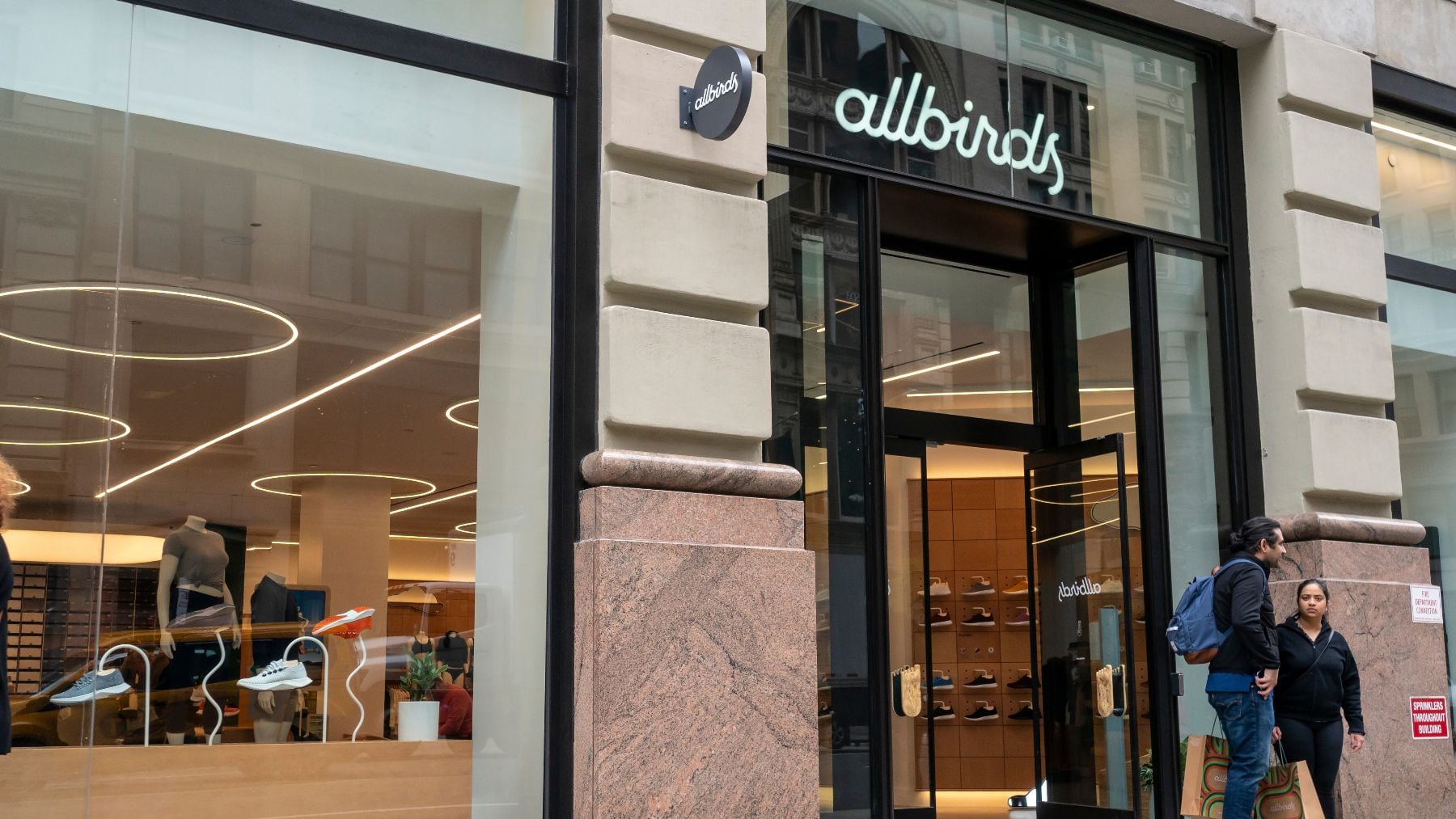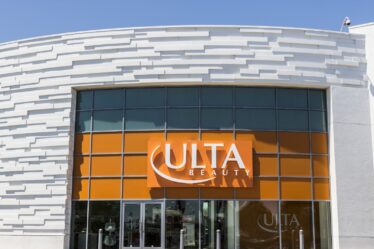
Allbirds just can’t seem to land on its feet.
Last week, the beleaguered direct-to-consumer brand announced co-founder Joey Zwillinger was stepping down as chief executive after nine years, though he’ll remain on the board as an advisor. Given recent performance, the departure wasn’t a shock — Allbirds has posted sales declines for the last five quarters, with 2023 sales dropping 15 percent to $254 million. Net losses widened 52 percent to $152 million. After releasing those results, Allbirds walked back previous guidance that it would generate earnings before interest, taxes, depreciation and amortisation by 2025.
After posting results, the company’s stock, which had already lost over 95 percent of its value at its November 2021 initial public offering, fell sharply. Allbirds’ market capitalisation is now just over $100 million, down from over $2 billion at its IPO.
It was just the latest in a long, painful fall from grace for a brand that was once viewed as one of the biggest success stories of the direct-to-consumer boom in the 2010s. It also cast fresh doubt on a “transformation plan” introduced about a year ago to put the company on the path to profitable growth. That plan included halting new store openings, partnering with global distributors and focusing on its core product, footwear.
There’s been some moves in that direction: Allbirds forged partnerships with distributors in Canada, South Korea, Japan, Australia and New Zealand, and it plans to close at least 10 stores this year in order to reduce overhead. But attempts to improve the quality of its $98 Wool Runner sneakers haven’t yet led to a sales increase. It expects further sales declines in the short-term, with 2024 sales projected to fall as much as 25 percent year over year to $190 million, down from a peak of nearly $300 million in 2022.
Now, Allbirds’ transformation plan is in the hands of its new chief executive Joe Vernachio, an apparel and footwear veteran who joined the company in 2021 as chief operating officer and started his new role on March 15. The brand still hasn’t given up on its goal of returning to growth by 2025. Despite its repeated stumbles, Allbirds’ decision to promote its operations chief is a sign that it’s at least confident in its ability to become a more efficiently run company.
“It’s not an easy thing for a founder to step aside, but they kind of reached a point where they said ‘this is the right thing for the business,’” said Tom Nikic, a senior equity analyst at Wedbush Securities. “It’s telling that the person that they chose as the new CEO was the chief operating officer. It’s very clear that the company’s operations need to be improved.”
Who is Allbirds’ new leader?
A new CEO may provide Allbirds with a fresh start. Like many brands born out of the DTC boom, Allbirds co-founders didn’t have traditional fashion backgrounds: Zwillinger was a former consultant and biotech executive, and fellow co-founder (and former co-CEO) Tim Brown was a professional athlete.
Vernachio, meanwhile, is an experienced retail executive, with past roles at Patagonia, Nike and The North Face. He’s dealt with brands in crisis: Before Allbirds, he was president at outdoor gear and equipment brand Mountain Hardwear, where he oversaw the company’s plans to restore its sales growth and profits.
The need for this sort of experience has become more pronounced as many prominent DTC companies have floundered in recent years.
“We see that these founders can be really great leaders and culture carriers in a period of growth and maybe aren’t the right people to lead the transformation or operating model reset,” said Abbie Zvejnieks, senior equity research analyst at Piper Sandler.
When Vernachio joined Allbirds in 2021, he was tasked with leading inventory, distribution and manufacturing. But by the end of 2023, the company expanded his role to include the brand’s international business and product development; he hired a new design chief in December.
As chief executive, he will be responsible for the brand’s turnaround, overseeing efforts such as the aforementioned store closures, with the goal of saving at least $35 million in operating and production costs by 2025.
“Joe [Vernachio] has a better background to be able to lead Allbirds in the environment that we’re in currently,” Zvejnieks said. “You need somebody who’s going to get into the details of the operations of the product plant, managing inventory and the plan for … transitioning some of these international markets to distributors.”
Can Allbirds’ products drive growth?
Even if Allbirds can narrow losses, the bigger issue lies in whether it can get sales growing again.
Declines have been prompted by an over-investment in new product lines, like running sneakers, that didn’t catch on with consumers and left the company with a deluge of unsold goods.
Since launching its transformation plan, Allbirds has been making incremental improvements to its core styles, including re-engineering materials to increase its shoes’ durability. Last November, for example, the brand released the Wool Runner 2 with a new midsole that provides more cushion and merino wool that wicks away moisture. It will launch a similar update to its Tree Runner style in April.
Allbirds’ 14 percent sales drop in the final quarter of 2023, though, is proof that it can’t solely focus on core products. Introducing new, innovative products could entice new and existing customers, Zvejnieks said.
On that front, it still plans to release Mo.onshot, a zero-carbon shoe made from regenerative wool and bioplastics, later this year. But that launch appears to be more of an advancement of the company’s sustainability efforts than a guaranteed sales driver.
“These shoes are a world first and are the culmination of seven years of learnings and innovations. We’re hopeful this moment will spark dialogue, exploration, and action for the fashion industry to make meaningful progress against climate change,” the company said in an emailed statement.
Where can Allbirds go from here?
Allbirds may have earned the title of Silicon Valley’s go-to shoe, but it has yet to prove its goodwill extends much further. Footwear giants like Nike and Vans have hit their own product ruts, but ultimately have decades of brand equity, nostalgia and rabid fan bases that will return to their products again, Zvejnieks said.
“It’s a very, very competitive industry, and it’s hard to make a mark, and once you’ve sort of lost the cool factor, which they seem to have lost, it’s hard to get it back,” Nikic said. And with its market cap lower than the $130 million in cash it has on hand, institutional investors may continue to lose interest, he added.
“They don’t have the luxury of having all the time on their other side. So they need to execute on this turnaround fairly quickly.”



